Assassins in Dungeons and Dragons made their first appearance in the Blackmoor supplement. This was the second Dungeons and Dragons supplement and was named after Dave Arneson’s original campaign. This supplement was published in 1975.
Assassins began as a sub-class of the thief. Assassins, however, were a darker sort of thief with a different set of skills. They could do the same things as thieves but not as well. But their special skill was murder. They had the ability to perform “assassinations” in which their skill might provide for an instant kill.
The Assassin had greater hit points than a thief. And they could use a wider range of weapons. They also had the ability to disguise themselves.
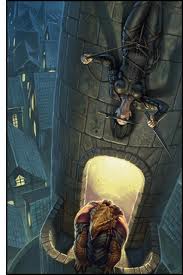
Assassins in Dungeons and Dragons have been present in most editions of the game
In First Edition the assassin appeared as a class in the Player’s Handbook. But it was considered a sub-class of the thief. The requirements for becoming a First Edition more stringent than that of becoming a thief. In order to qualify for an assassin the player must roll a strength of at least 12, an intelligence of at least 11 and dexterity of at least 12.
The First Edition assassin no longer gained more hit points than a thief. Both classes receive a six sided dice for hit points. The assassin had limited thieving abilities. They performed these abilities at two levels lower than a thief would.

Like thieves, the assassin, is capable of back stabbing enemies. But the First Edition assassin has to make a choice when making attacks by surprise. Are they going to back stab and use the damage multiplier that they and thieves enjoy for such a sneak attack? Or are they going to attack normally and gain the surprise initiative offered in 1st Edition? Or are they going to attack on the assassination table? This choice is not a simple one. Because each method of attack has it’s own advantages and disadvantages.
In Second Edition assassins were removed from being a standard class. They were later presented as a “Kit” in the Complete Thief’s Handbook.
Third Edition made the assassin a prestige class. In order to qualify the individual had to be able disguise themselves, move silently and hide in shadows and then hunt down a victim to murder in cold blood to prove that they were worthy of the title. These assassins were skilled with the use of poison. They were skilled at murdering others with little risk to themselves. High level assassins could even hide themselves in plain sight.

Fourth Edition released the assassin as a class in Dragon Magazine issue #379.
Fifth Edition made the assassin one of the archetype classes of the rogue. Assassins in Fifth Edition focus their training on the grim art of death. This includes:
- Hired killers
- Spies
- Bounty hunters
- And specially anointed priests trained to exterminate the enemies of their deity
The Fifth Edition assassin is skilled in:
- Disguise
- Poison
- Stealth
The Fifth Edition assassin gains the ability to assassinate at third level. However, this is not the instant kill from First Edition. Instead the assassin gains advantage on attack rolls on creatures that have not yet taken a turn in combat. At ninth level the assassin gains expertise at infiltration. At thirteenth level the assassin can mimic others perfectly. And at seventeenth level the assassin gains the “death strike” ability. This allows the assassin double damage against an opponent if that opponent is taken by surprise and fails a modified constitution saving throw.
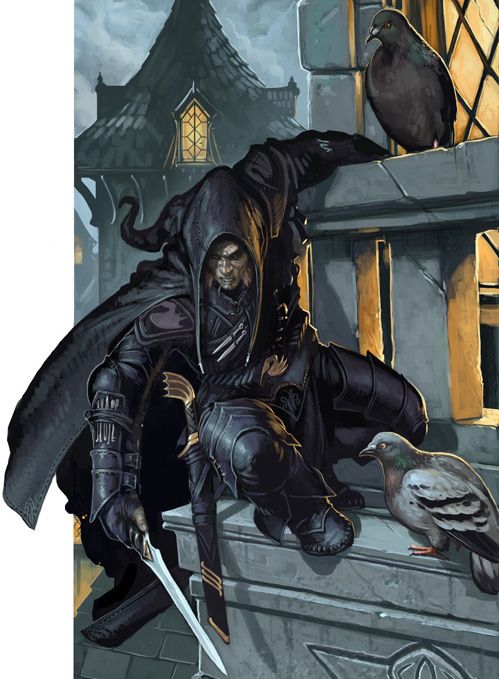
Assassins in Dungeons and Dragons were evil (in most editions)
The later editions diverged from this requirement. But the early editions declared that the occupation of killing people in cold blood required an evil alignment. As assassins were hired killers in these editions this sort of requirement made a great deal of sense.
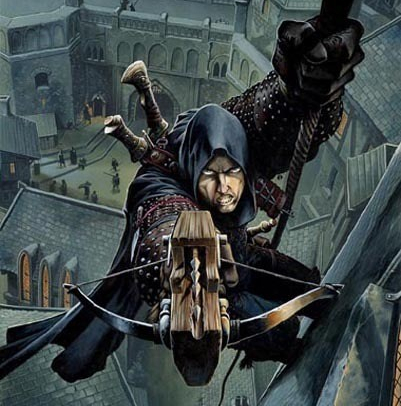
Assassins in Dungeons and Dragons are part of a guild
This is true at least in the earlier editions. Assassins were generally hired to perform assassinations. First Edition even included a nice little table in the Player’s Handbook dictating the minimum price that an assassin would require to perform assassinations against characters and non-player characters of different levels. When an assassin performs an assassination in a town with such a guild the local guild will come calling. They will not be pleased that the assassin has conducted work there without being a member or paying membership dues.
An assassin is not required to be a member of a guild. But all non-player assassins were in the earlier editions of the game. Most towns or cities had such a guild. And these guilds would control territories of from 10 miles to 100 miles from their headquarters. An assassin who is not a member of the guild who enters in this radius will be asked to join. They need not do so. But should they perform an assassination in that area without joining the guild will sentence that assassin to death.
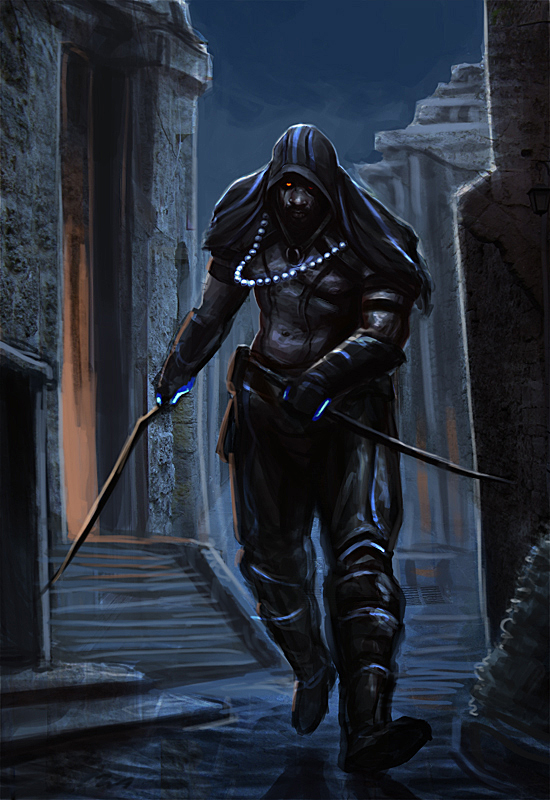
Headquarters of assassin’s guilds located in cities and towns were not obvious. Killing and murdering others is usually illegal in most places. So keeping the guild location secret was essential to professional success. It was usually a nondescript structure that few people would take much notice of such as:
- Warehouses
- Shop
- Shack
- Home
- Slum dwelling
- Tavern or inn
Assassin’s guilds are not looking for notoriety. They are looking to conduct their business in the shadows. They would not be above murdering anyone who discovers the location of their hideout or one who speaks of it.
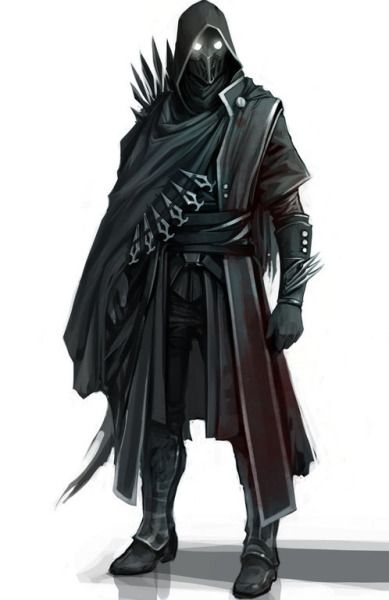
Assassins in Dungeons and Dragons are masters of disguise
A First Edition assassin could disguise themselves as a human, demi-human or humanoid. They could appear of either sex. They could make themselves look taller or shorter. They could resemble any class. And they could appear as any type of worker, merchant, noble or beggar.
The chances of discovery were fairly low for the assassin in the early editions so use of disguise could be quite an advantage over others.
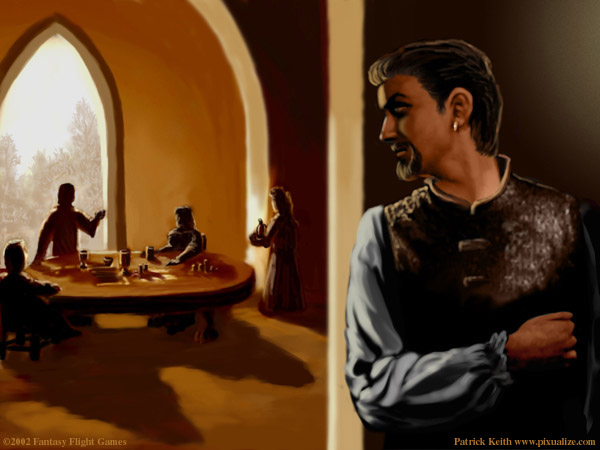
Assassins as spies
Another role of the early edition versions of the assassin was as a spy. First Edition provided tables for determining success in spying missions. It also provided a table for determining what would happen if the spy was discovered.
Spy missions might include:
- Determining defenses of an enemy stronghold
- Troop quantities and disposition
- Obtaining maps or documents from the enemy
- Obtaining plans of the enemy
- Achieving a high level or rank in the enemy army
The more complex a mission could be the less chance of success it might have. Spies were paid to take extraordinary risks. Their survival depended upon their skill.
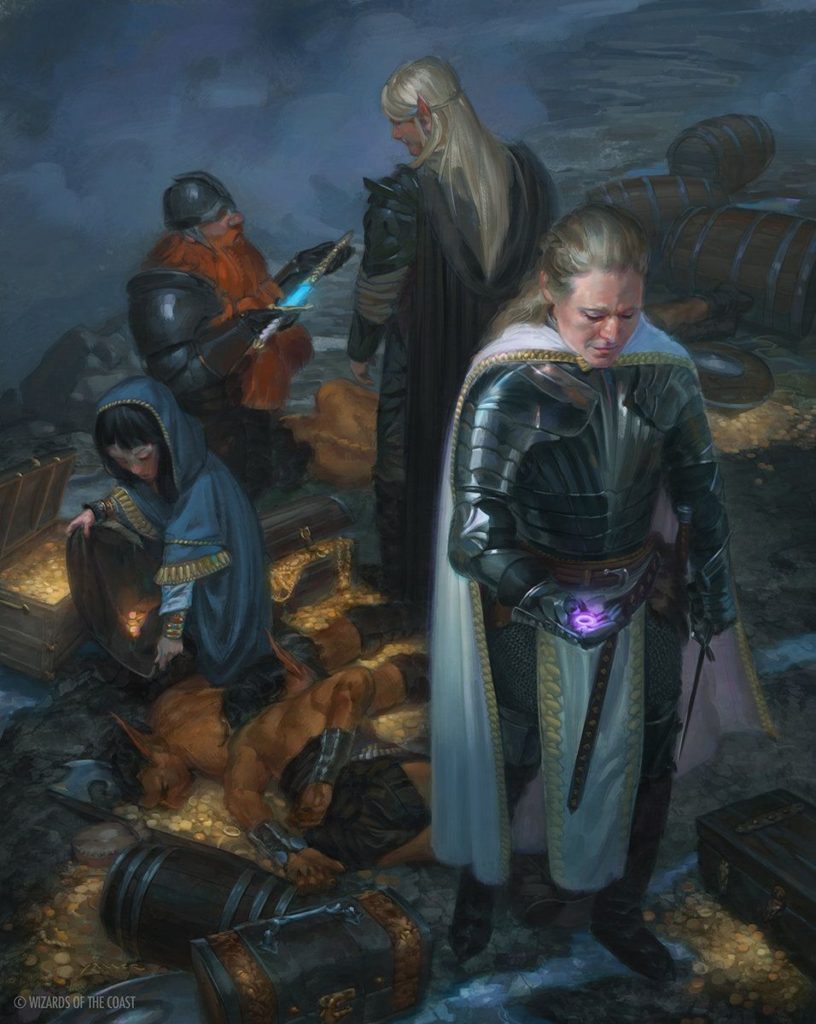
Assassins could use poison
No other class in any of the early editions of this game could use poison. Poison use is illegal in virtually all towns and cities. Use of poison itself is often considered to be an act of evil. Assassins could not only use poison….they could make their own. They were the masters of such substances and were highly qualified to distill such things for their own purposes.
It was possible in the early editions for others to notice poison on another person’s blade in some circumstances. Such notice would almost certainly be immediately reported to the city watch.
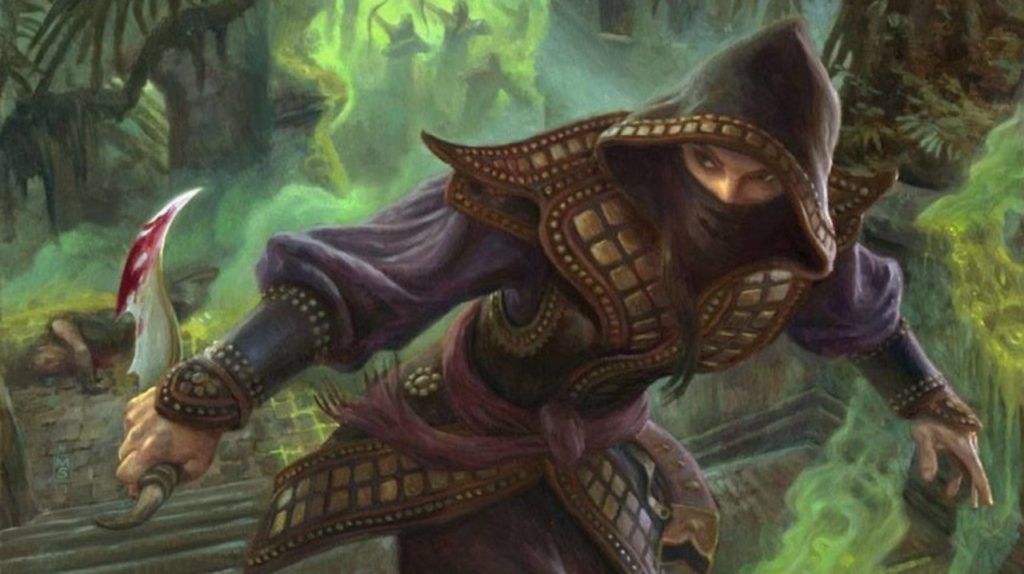
There can be only one!
This was true in Highlander. And it was true in First Edition for assassins and monks and druids. There could be only one with the top rank for these classes. That meant that one had to fight their way to the top. In the case of assassins….they could assassinate their way to the top instead.
This was quite controversial. Especially with players….. No player likes the prospect of losing a level or dying when they achieve the experience points necessary to advance. Every player wants the ability to reach the highest levels. But these classes had to fight their way up once they reached a certain level. There could be a limited number after a certain level. And then there could only be one of the very top level.
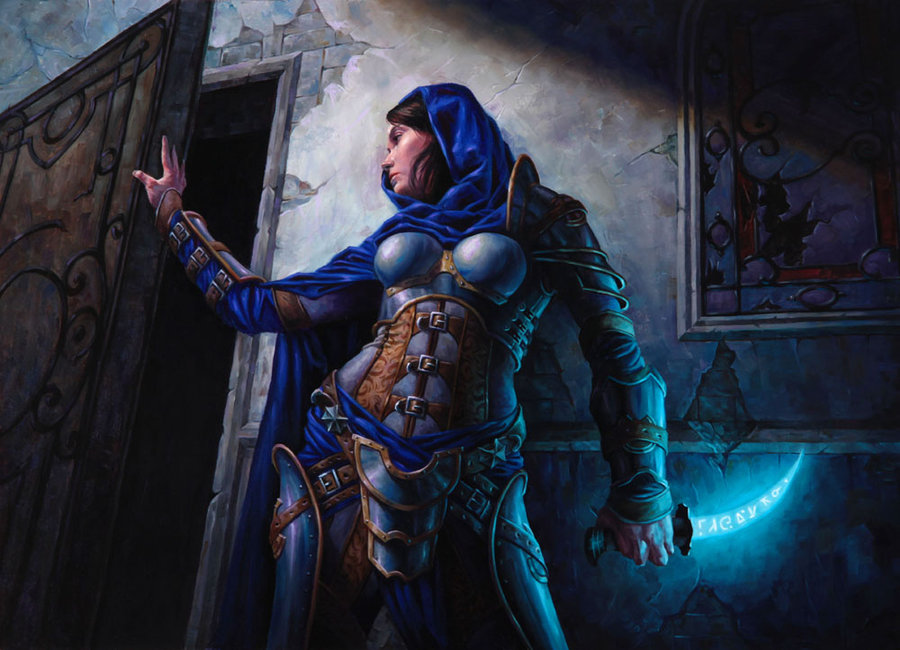
For assassins this top level was called the “Grandfather of Assassins.” The headquarters of this Grandfather of assassins could be just about anywhere. Naturally this top assassin would not want his or her whereabouts known to everyone. Especially not to all of those would be grandfathers out there waiting to kill them. They could have their headquarters in a castle, tower, cavern, monastery, palace, temple or anywhere else they chose for their personal security and comfort. They might even keep their headquarters in some deserted areas such as:
- Moor
- Desert
- Swamp
- Murky wood
- Dismal marsh or fen
- Deserted island
- Remote coastline
The farther from civilization that this headquarters is the safer the grandfather could be. Upon slaying the old grandfather of assassins the new grandfather must pay all of the remaining followers of the old one 1000 gold pieces per level of experience, destroy the old headquarters and create a new one.
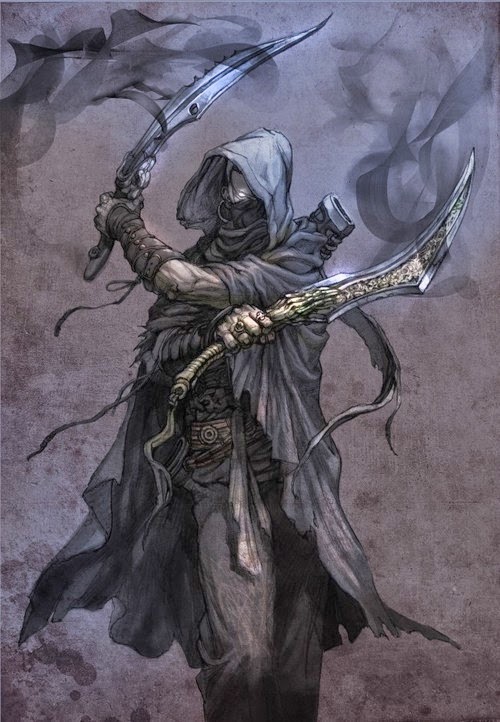
Assassins in Dungeons and Dragons are deadly
Regardless of the edition that you play the assassin can be a deadly threat to others. Their skill with the use of poison and their talents for killing others make them someone to watch out for. You would hope that one is not in your adventuring party…..but can you really be sure of that?
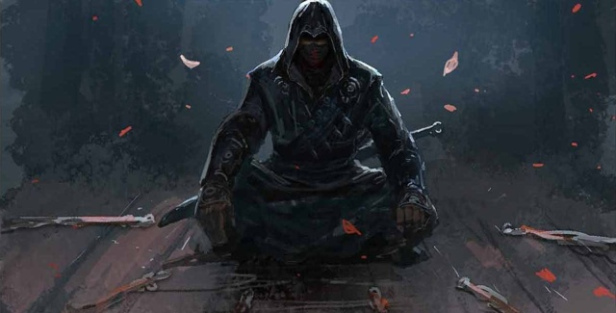
If you enjoyed this article then perhaps you will enjoy these as well:
- Free Dungeon Master Resources
- City Adventures
- Gambling
- Morale
- Turning Undead
- Plague
- Here be dragons!
- Aging
- Tactics



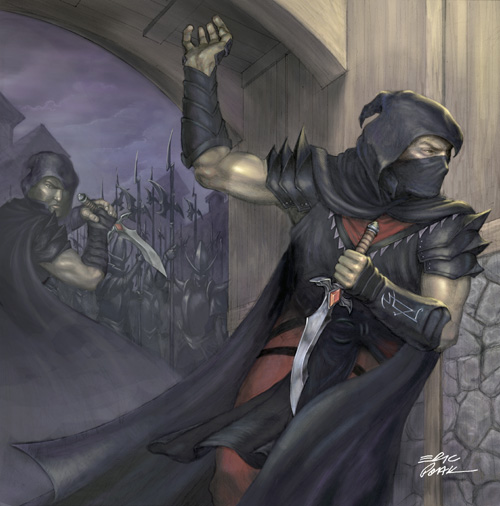
In Second Edition AD&D, the Scarlet Brotherhood book also included Assassins (and Monks, for that matter) as a playable class.